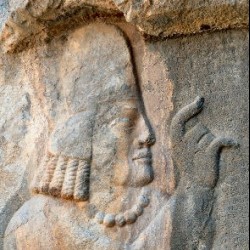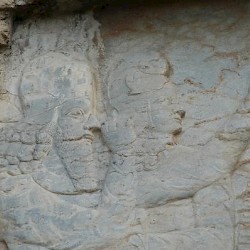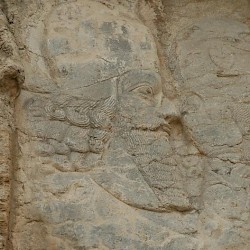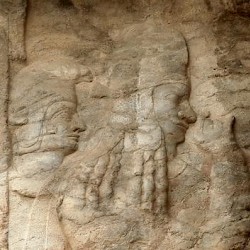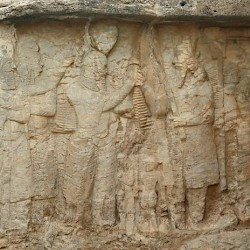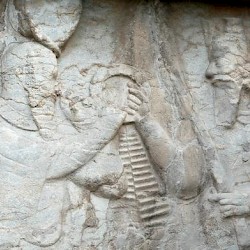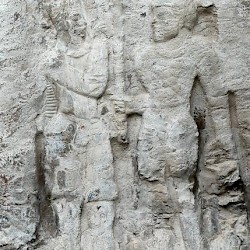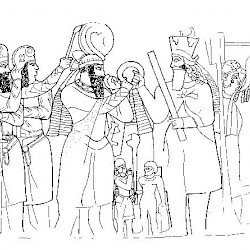Naqš-e Rajab, Investiture relief of Ardašir I
Q70786963Naqš-e Rajab: place in Fars, close to Naqš-e Rustam, Persepolis, and Istakhr, well-known for its Sasanian rock reliefs.
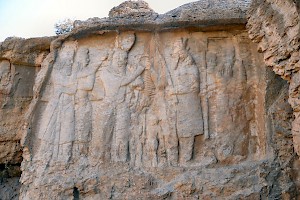
The oldest relief was made by king Ardašir I (r.224-241), the founder of the Sasanian empire. His father Pâpak had defeated his overlord, the Parthian king Artabanus IV, but died not much later. His son Ardašir, however, was now inaugurated as king and captured the Parthian capital Ctesiphon. This relief shows the investiture.
The relief itself shows, to the right, the supreme god Ahuramazda (or, as he was called back then, Hormuzd), who hands over a ring to Ardašir, on the left. This ring, called cydaris, is the symbol of power. Ahuramazda also carries the barsom, a bundle of sacred twigs. Both men wear diadems. The lower part of this relief is not completely finished.
There are several people standing to the left and right of the two central figures. To the left, one can see a courtier making a gesture of admiration and another one carrying a fly-whisk. This man can be seen on all reliefs of Ardašir (e.g., Naqš-e Rustam) and must have been an important official.
The female figures to the right appear to be walking away from the central scene. The right-hand one may be Ardašir's queen, the other one can be identified as a noble lady.
Next to this relief was an inscription that says "The Zoroastrian faith had died out, but I, the king of kings, restored it."
Between Ardašir and Ahuramazda, we can see two small figures. The left one, near the feet of the king, is often identified with the crown prince Shapur. He expresses his respect to the other man, who cannot be identified, but seems to be a deity with a barsom.
During the reign of king Bahram II (276-293), a small relief was added to the left. It shows the Zoroastrian high-priest Kartir, who makes a gesture of admiration and loyalty to king Ardašir. This man made Zoroastrianism the state religion and organized persecutions of adherents of other faiths, like Manicheism. In an inscription, the high-priest enumerates his services to the Sasanian state.
